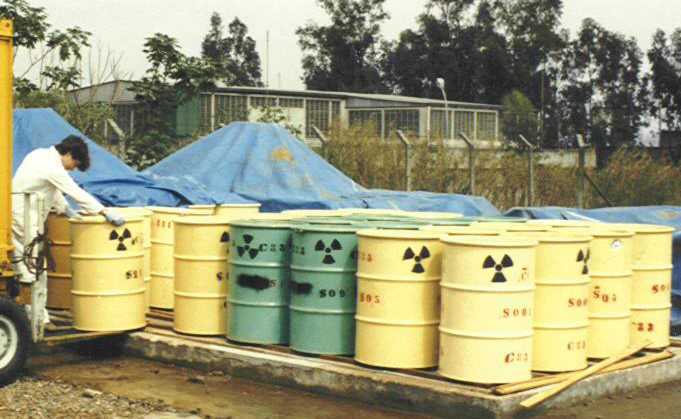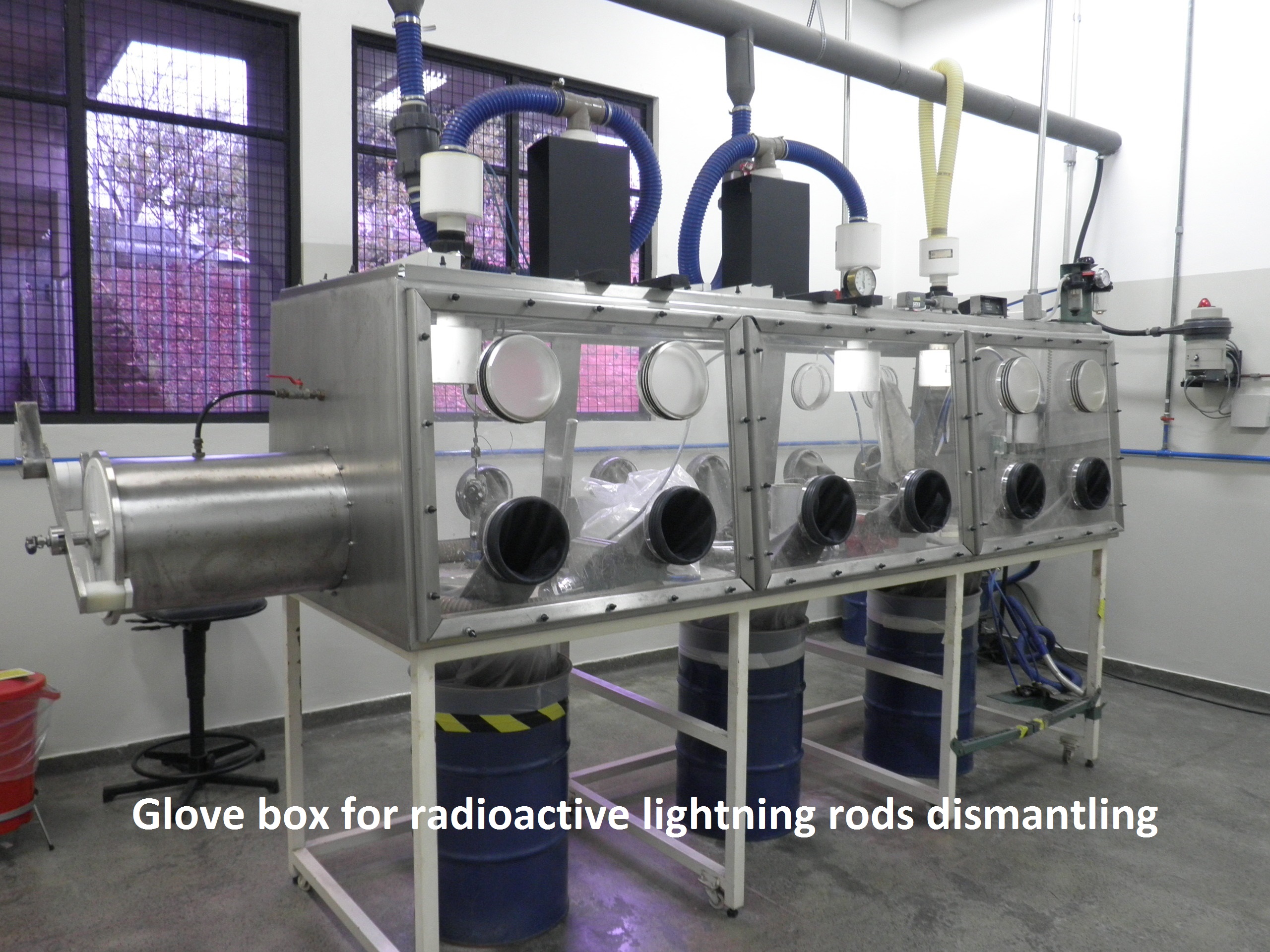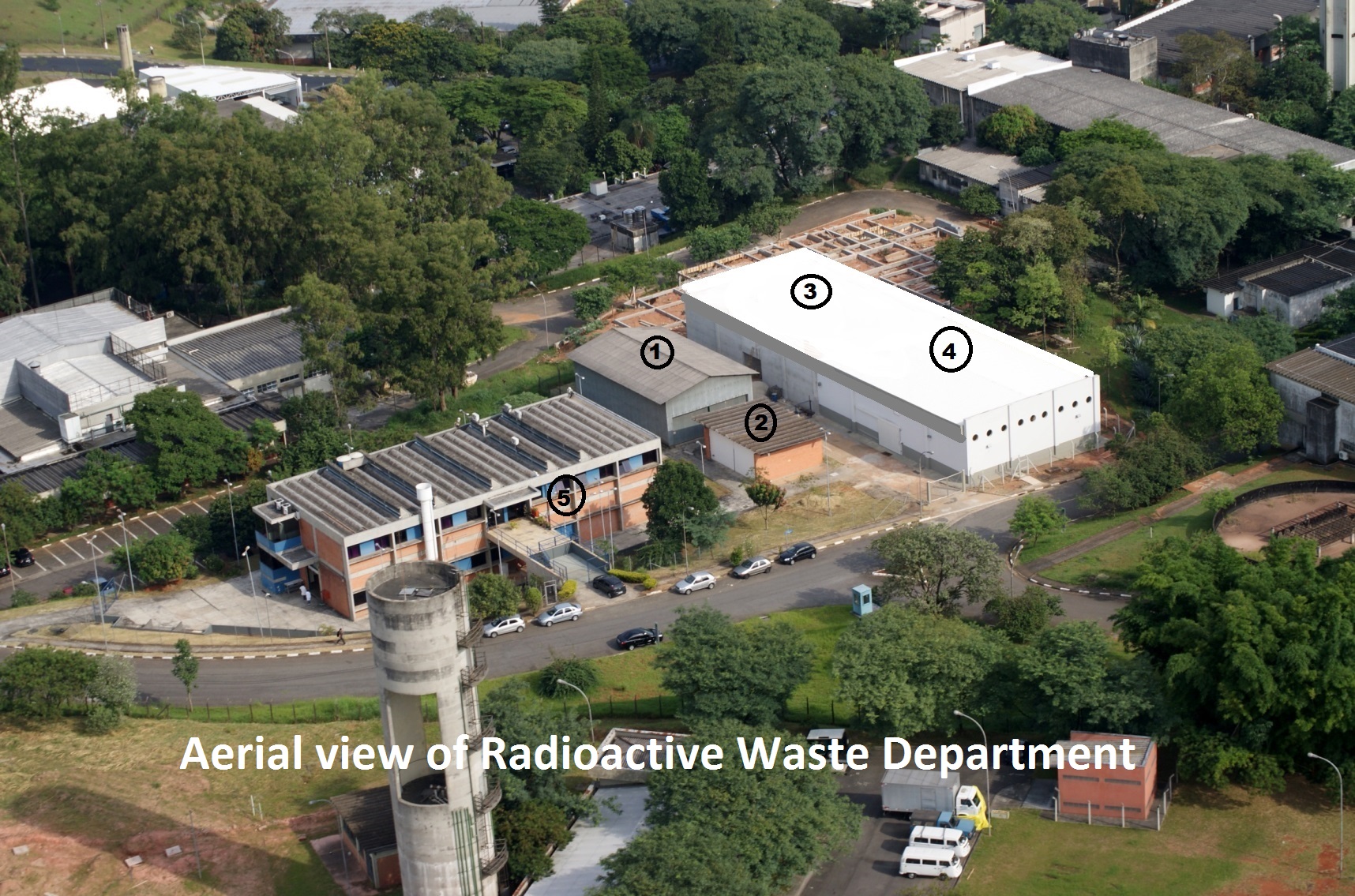About us

IPEN's Radioactive Waste Management Service, SEGRR, is one of the Brazilian Centralized Facility for radioactive waste management. It acts as executor of the constitutional mission of the National Nuclear Energy Commission to receive and deposit radioactive waste generated by radioactive and nuclear facilities in Brazil, in accordance with Federal Law 7781 of 1989. In this context, it is responsible for the receipt, treatment and storage of radioactive waste generated in nuclear applications in the State of São Paulo and the southern region of Brazil, which represents approximately 80% of the institutional waste generated in the country. In addition to these, depending on some factors, it also receives waste from other Brazilian states.
SEGRR also provides an essential service to the functioning of IPEN's research laboratories and it has played an important role in the development of technologies for the management of radioactive waste and in the training of qualified personnel.
Mission
The
Radioactive Waste Department has the mission to promote the safe management of
radioactive waste generated in Brazil, following the ethical principles of
protection for human being and the environment, today and in the future.
History
The Radioactive Waste Management Department soon
after the pool type research reactor, IEA-R1, began operating in 1958 and the
first batch of I-131was produced.
During the first decade of operation of the
reactor, the solid waste was collected in kraft paper and 40 L polyethylene bags
and stored to allow for the decay of short lived radionuclides to a level at
which it could be disposed of in simple trenches. Liquid waste generated from radioisotope
production were stored in glass vials for decay and then discharged. Low
activity, small volumes generated and short half-life of radioisotopes present
allowed this form of management.
The second
decade was characterized by major expansion and diversification of research and
production activities. Currently, IPEN has pilot plants for conversion and reconversion
of uranium, plant for the manufacture of fuel elements for the research reactor,
one thorium nitrate production plant, plants for production of sealed sources and
other laboratories for various applications of nuclear technology. This
expansion has resulted in a significant increase in the generation of
radioactive waste, either in volume or in activity, and also resulted in the
presence of radioisotopes with a long half-life. At the end of the decade, this
type of management had to be modified.
The in situ deposition of solid waste is no longer practiced and has been designed facilities for processing and storing the long half-life waste. A facility for compacting solid waste began operating in 1982. In the following picture, this facility is showed soon after the start of operation. It consisted of a fenced area with a building with the waste compactor unit and the storage area for untreated waste, and platforms for drums storage. The 10 ton compactor, allows a five-volume reduction factor of waste in 200 L drums.

After a few
years of operation, sheds were built to store the treated waste. It could be
seen in the picture, the facility after construction of the sheds.

One important
fact which impacted the management of radioactive waste in IPEN was Goiania
accident in 1987. First, 80 cubic meters of paper bales and 20 cubic meters of metal
scrap contaminated with Cs-137, which had been transported to recycling plants in
four cities of São Paulo before the authorities had the knowledge of occurrence
of the accident, were collected by IPEN. These wastes along with those
generated in the decontamination of the recycling plants, suddenly tripled the
amount of waste stored at IPEN.
Second, the accident started a wide monitoring program of radioactive facilities in the country, especially those which had sealed sources, resulting in a progressive entry of disused sealed sources, discarded as radioactive waste.

Third, the
accident precipitated the decision on the prohibition of the use of radioactive
lightning rod. On the date of the ban, the country had about 75,000 lightning
rod installed, which began to be collected at a rate of 1,000 to 2,000 per
year, growing the volume of long half-life of waste, in this case, the Ra-226
and the Am-241.

Added to
this is the fact that some IPEN facilities began to be dismantled or reformed in
the mid-90s, generating solid waste not compressible. This increase has forced
the adoption of a new concept for the radioactive waste management facility.
This was achieved in the form of an integrated unit with facilities for the treatment
of all these new wastes. The construction of the building was begun in 1998 and
completed in 2002. In 2012, storage sheds were remodeled and expanded.
Currently, SEGRR has a 180 m2 input storage shed (Shed 1); a 80 m2 shed (Shed 2) for intermediate storage for treated sealed sources; a 425 m2 shed (Shed 3) for initial storage of non-treated waste; another of equal area shed for the intermediate storage of treated waste (Shed 4); and a building for the treatment units, personnel and laboratories (Building 5)



